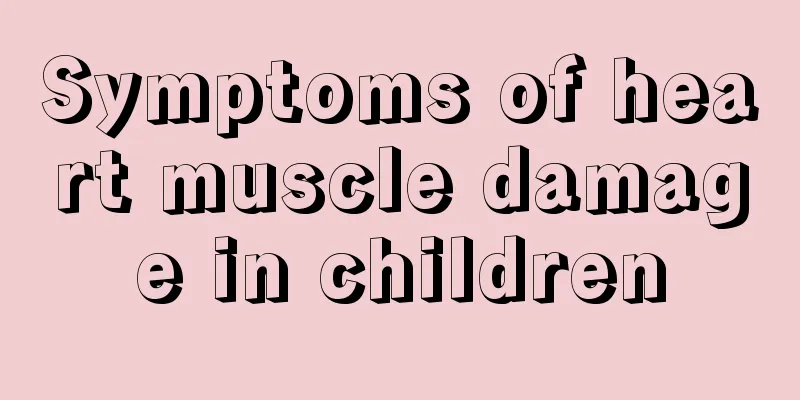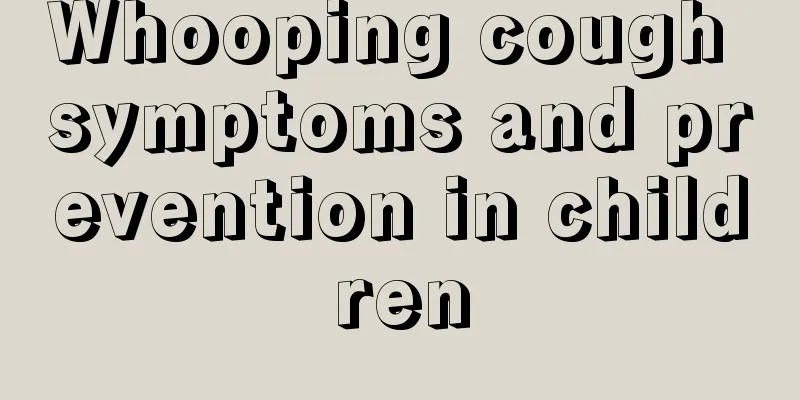Symptoms of heart muscle damage in children

|
Children are not as strong as adults due to their physical development, so it is normal for them to have myocardial damage. Myocardial damage includes many factors. Most myocardial damage can be cured after treatment, and no traces can be left. However, it should be noted that different measures should be taken according to different conditions. In general treatment, decisions should be made based on the patient's symptoms. In severe cases, serious arrhythmias, heart failure, shock, etc. may occur. Most patients with myocarditis recover after treatment without any symptoms or signs. A few may have sequelae such as arrhythmia and heart enlargement. When doctors diagnose myocardial damage in children, they mainly consider the possibility of myocarditis, so the child can be treated as having myocarditis. There is currently no specific treatment for viral myocarditis. Comprehensive measures should be taken in a timely manner based on the condition, including the following: 1. General treatment Resting in bed as early as possible can reduce the burden on the heart. 1) Patients with severe arrhythmias and heart failure should rest in bed for one month and not participate in physical activities within six months. 2) For those without changes in heart morphology or function, rest for half a month and do not participate in strenuous physical activities within 3 months. 2. Antiviral treatment Astragalus has antiviral and immune-regulating functions, and activates the interferon system. Usage: 10ml of Astragalus injection + 250ml of 5% glucose injection, intravenous drip, once a day for 10-14 days; or 20ml of Astragalus oral solution, twice a day for 6 weeks. cause Soil, water and nutrition factors According to investigation, this disease has obvious regional characteristics. The soil, water and food in the affected areas lack certain trace elements needed by the human body, such as selenium, molybdenum, magnesium or related nutrients, which interfere with myocardial metabolism, cause myocardial damage and thus become ill. Early markers Refers to markers whose blood levels increase within 6 hours after myocardial injury. Currently known early markers for diagnosing acute coronary syndrome (ACS) mostly appear in the early stages of the pathological process (before myocardial necrosis). The use of early markers can help with early diagnosis and, in turn, early treatment. C-reactive protein (CRP) CRP increases abnormally in the early stage of myocardial operation and has a short window period. It has good clinical value in the early stage of myocardial injury and prognosis estimation. With the application of high-sensitive CRP (hs-CRP) detection method, its clinical application value has received increasing attention in recent years. Myoglobin (Mb) Although Mb has low myocardial specificity, it can be rapidly released from the necrotic myocardium after myocardial infarction and has a high sensitivity. Mb has a short blood half-life, so it helps to observe whether reinfarction occurs during the course of AMI and whether the infarction expands. Mb is also a sensitive and accurate indicator for evaluating reperfusion during thrombolytic therapy of AMI. |
<<: Symptoms of myocardial damage in babies
>>: What should I do if a bug gets into my child’s ear?
Recommend
How old should the baby be to start supplementing DHA?
After birth, the baby's body needs to supplem...
What are the treatments for baby's oral ulcers?
When children are very young, their immune functi...
What should I do if the fetus has a cyst in the abdomen?
When a pregnant woman goes to the hospital for an...
If your child's ears get inflamed, parents should remember these methods
The inside of a child's ear is relatively fra...
Is it normal for a child to be sleepy when having a fever?
Children have relatively poor resistance, so it i...
What should I do if my baby's leg is broken?
Babies' skin is very delicate and will appear...
Causes of redness and swelling after children receive DPT vaccination
In fact, many parents know that vaccination is an...
Newborns cry after vaccination_Newborns cry at night after vaccination
I believe many people know that after a newborn i...
What to do if your child has high blood test results
The so-called high blood items refer to the high ...
What to do if a child has a fever and indigestion
Many of us always think that taking care of a bab...
At what age do children change their teeth?
Our children will all go through a tooth replacem...
The reason why three-year-old babies cannot sleep well at night
Children’s physical condition is getting worse da...
What can children with precocious puberty eat?
Nowadays, most children with precocious puberty a...
What should I do if a little girl has dandruff?
Women all love beauty very much, and since enteri...
What to do if your baby has keratitis
The cornea is a very important part of the human ...









